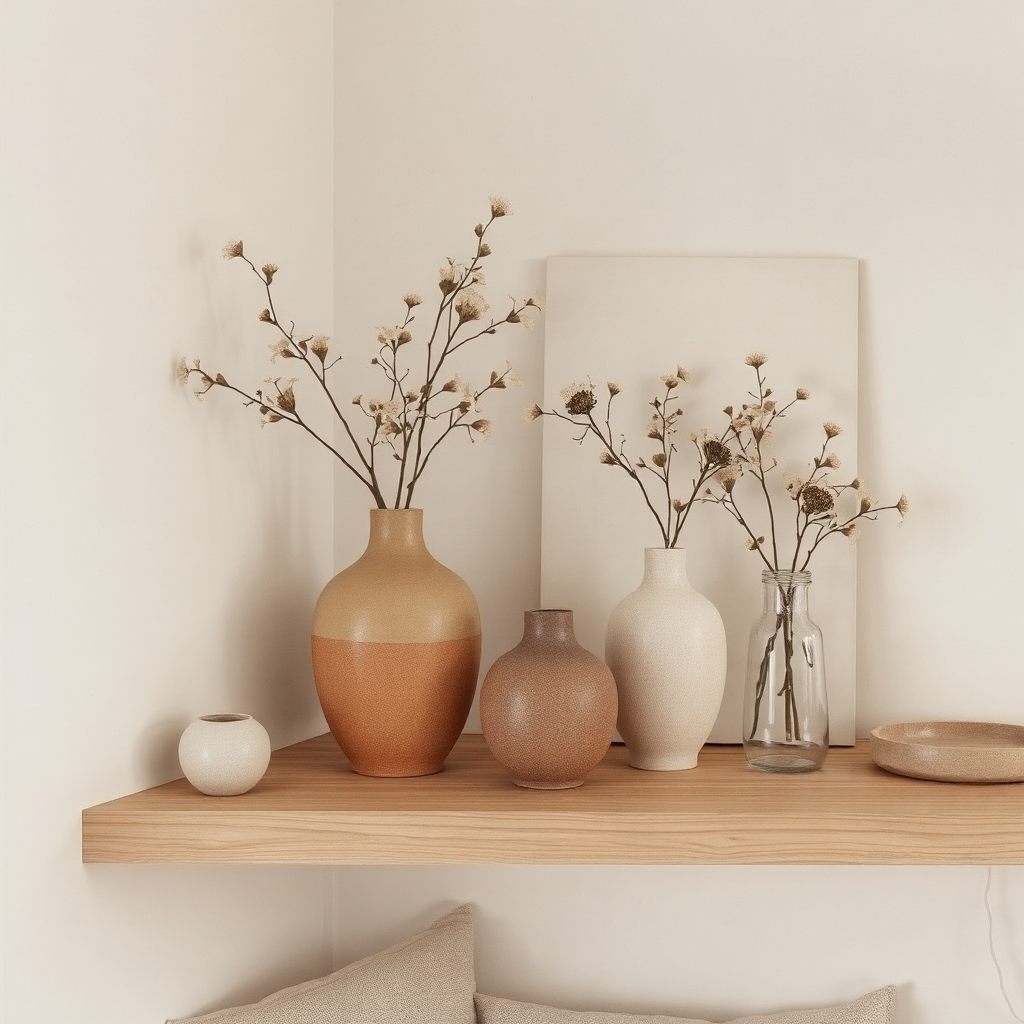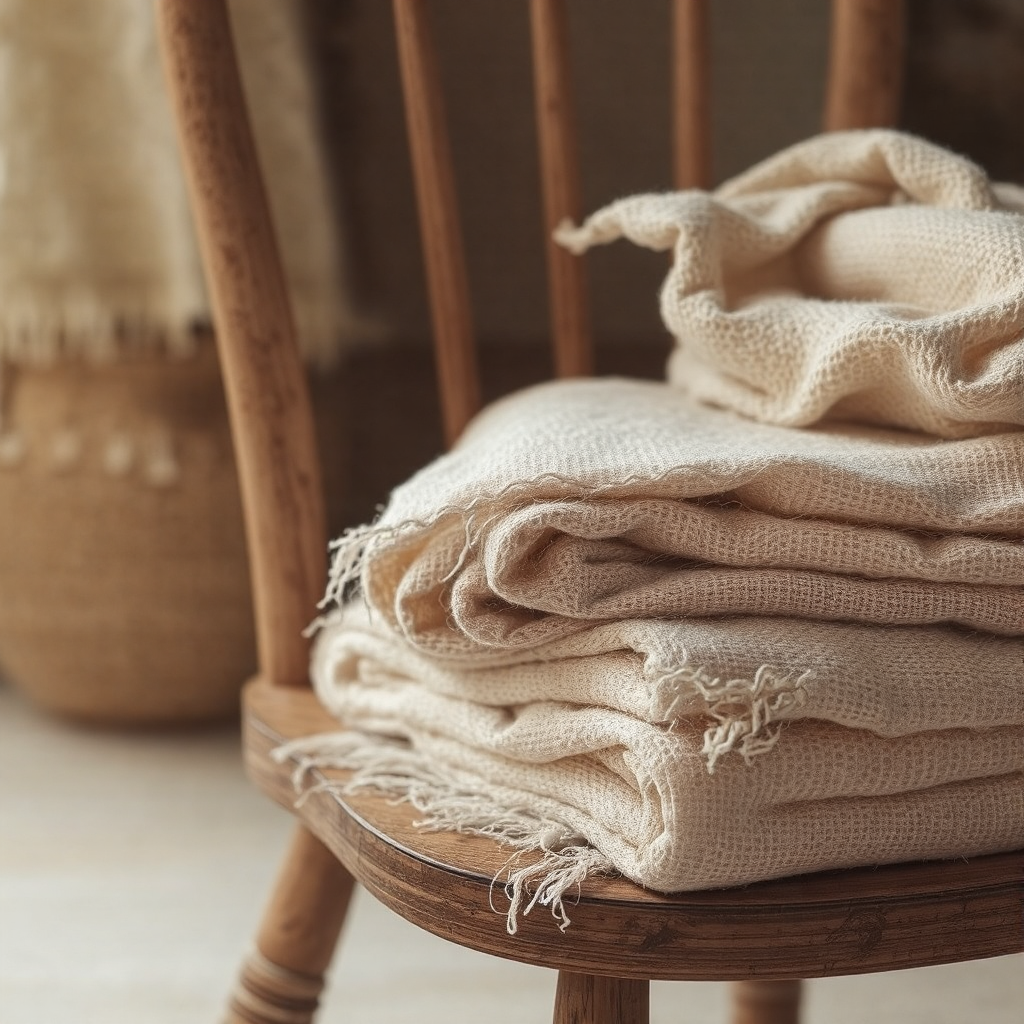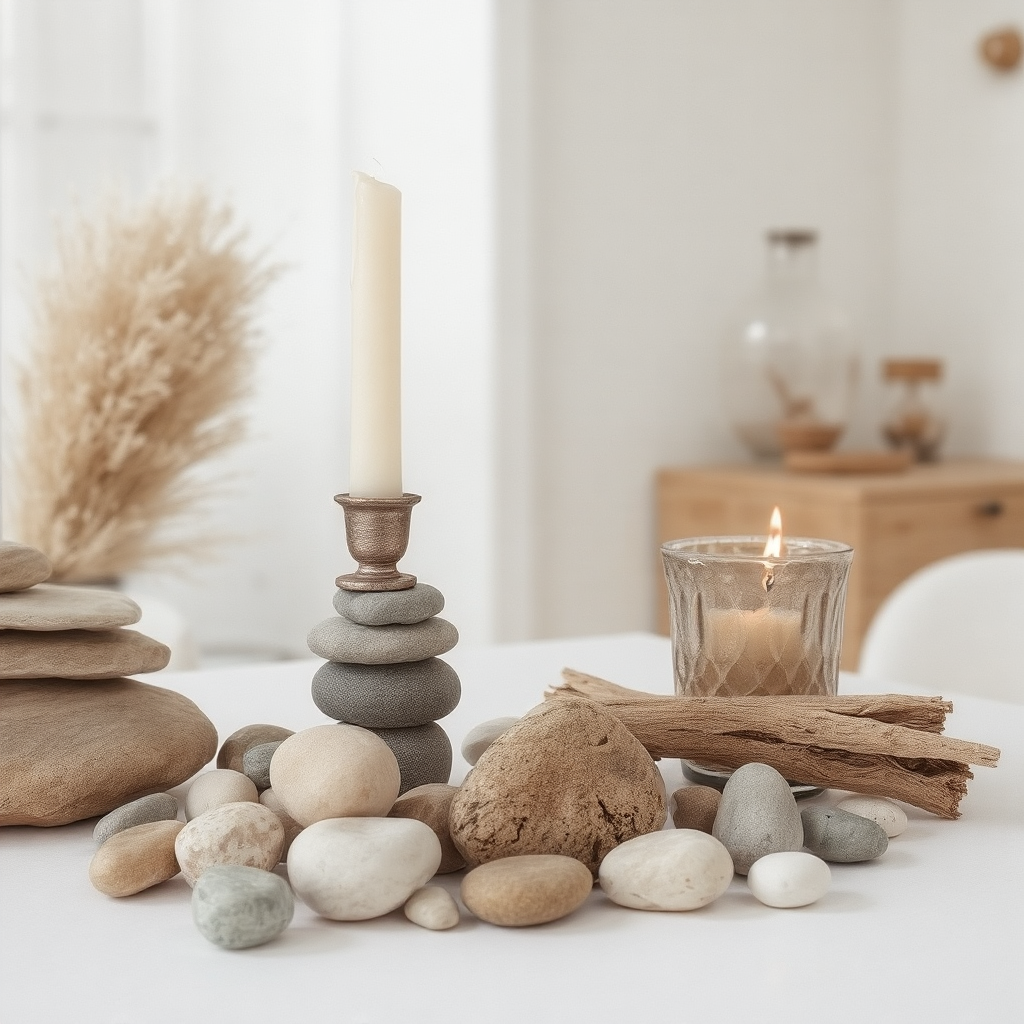Introduction to Handmade Details
In the realm of interior design, the significance of handmade details cannot be overstated. These unique, handcrafted elements serve as the cornerstone of personalized spaces, adding layers of character and warmth that are often absent in mass-produced decor. Handmade details refer to items created with care and intention, often reflecting the artisan’s skill and creativity. From pottery to textiles, these elements not only serve decorative purposes but also connect to the artisanal techniques and cultural narratives behind them.
Incorporating handmade details into a room can transform an ordinary space into one that is imbued with authenticity. These unique touches provide an opportunity for homeowners to showcase their individuality, creating a living environment that feels truly their own. Unlike generic pieces, handmade items often carry stories and emotions that resonate with their owners, making them cherished additions to any home. This distinctiveness fosters a sense of belonging and comfort, essential components of a well-designed space.
Moreover, the growing trend toward sustainable living has elevated the appeal of handmade details, as many artisans prioritize eco-friendly materials and ethical practices. By supporting local artisans and craftspeople, homeowners not only acquire unique pieces but also contribute to the preservation of traditional crafts and the promotion of sustainable practices. In today’s fast-paced world, where mass production dominates, the choice to integrate handmade elements into home decor provides a sense of authenticity that is increasingly sought after. Ultimately, these simple yet profound touches weave a narrative of history, culture, and identity into our living spaces, elevating them far beyond mere functionality.
The Allure of Handmade Objects
Handmade objects possess a charm and uniqueness that sets them apart from mass-produced items. Each piece, crafted with care and skill, showcases the artisan’s dedication to their craft, resulting in a product imbued with personality and character. These handmade creations often reflect the traditional techniques and cultural heritage of their makers, allowing buyers to appreciate not only the beauty of the item but also the artistry involved in its creation. Unlike mass-produced items, which are manufactured in repetitive cycles and often lack distinct features, handmade objects are one-of-a-kind, each telling a story of creativity and effort.
The craftsmanship inherent in handmade objects is truly remarkable. Artisans pour their expertise and passion into every detail, whether it’s a piece of pottery, a woven textile, or a carved wooden item. This level of dedication often translates into superior quality, as each piece is carefully inspected and perfected before reaching the consumer. Hence, investing in handmade items means supporting labor-intensive processes, which often promote sustainability and eco-friendliness, contrasting sharply with the rapid production methods typically used for mass-market goods.
Moreover, the emotional connection fostered by handmade objects cannot be overstated. Consumers frequently resonate with the stories behind the creations, establishing an intimate relationship with each piece. Knowing that items were crafted by skilled hands often enhances their value, both practically and sentimentally. This appreciation for the narrative behind a handmade object prompts enthusiasts to seek them out, embracing the idea that these pieces contribute to the overall warmth and character of their living spaces. As individuals strive to curate environments filled with meaning, handmade objects serve as focal points that inspire conversation and personal connection.
Types of Handmade Details for Your Space
Handmade details serve as unique elements that can elevate the aesthetic appeal and individuality of any space. These details can be categorized into several types, including ceramics, textiles, wall art, and furniture, each offering their distinct charm and character.
Firstly, ceramics are a timeless category that can add both functionality and beauty to various environments. Handmade pottery pieces, such as vases, bowls, and mugs, often feature intricate designs and vibrant glazes that capture attention. Incorporating handmade ceramics into your space, whether displayed on shelves or used in daily activities, infuses warmth and a personal touch, making them essential for creating a cozy atmosphere.
Secondly, textiles hold immense potential for transforming a space’s ambiance. Handmade items like cushions, throws, and tapestries can dramatically influence the overall aesthetic. Textiles crafted from natural fibers—such as linen and wool—often provide a tactile quality that enhances comfort. Choosing handmade textiles not only supports artisans but also allows for a diverse range of colors and patterns, enabling personalization that mass-produced options cannot match.
Wall art is another significant category that can define the character of a room. Handmade paintings, prints, and mixed-media pieces can serve as focal points that reflect the owner’s personality and interests. Unique wall art adds depth and narrative to a space, helping to create an environment that resonates with those who inhabit it. Additionally, incorporating handmade art pieces can contribute to discussions about craftsmanship and creativity within any setting.
Lastly, handmade furniture encapsulates the essence of bespoke design. Unique chairs, tables, and cabinets can serve both practical and decorative purposes. Each piece is generally crafted with attention to detail, ensuring that the furniture not only meets functional needs but also enhances the aesthetic quality of a room through its design and craftsmanship.
DIY Handmade Touches: Crafting Your Own Decor
Creating handmade decor items not only personalizes your living space but also infuses it with character and warmth. Engaging in DIY projects allows you to exercise creativity while crafting unique pieces that reflect your style. Here are a few achievable projects that will help you elevate your home decor.
One simple project is to create a set of decorative jars using repurposed glass containers. Begin by gathering jars of various shapes and sizes. Clean them thoroughly and remove any labels. Next, use acrylic paint or glass paint to add your desired color scheme. Consider using natural colors for a more streamlined look or bright hues for a pop of vibrancy. You can embellish these jars further with twine, lace, or dried flowers for added texture. Once completed, these jars can serve as practical storage solutions or as illuminated centerpieces when filled with fairy lights.
Another rewarding idea is crafting wall art using canvas and natural elements. To start, gather leaves, branches, or flowers. Press them flat using a heavy book for a few days. Using a blank canvas, arrange the dried elements to create a unique design. You can attach them using glue or even create a mixed-media piece by incorporating paint or fabric. This not only beautifies your wall but also connects you to nature, giving your room an organic feel.
When sourcing materials for your projects, consider local craft stores or online marketplaces. Thrift stores and flea markets can also be excellent sources for unique items that may inspire your DIY decorations. By investing time into these handmade touches, you create not only decor but memories tied to a sense of accomplishment and creativity. These efforts contribute to a home that truly reflects your individuality and personal taste.
Choosing the Right Palettes and Materials
Selecting the appropriate colors and materials for handmade items is crucial in creating a cohesive and inviting space. To begin, understanding the fundamentals of color theory is essential. Colors can evoke emotions and set the tone of a room; thus, choosing hues that complement existing decor is vital. For instance, if a room is dominated by warm colors such as reds, oranges, and yellows, opting for handmade pieces that feature similar shades or harmonizing colors can enhance the overall aesthetic. Conversely, cooler shades like blues and greens can bring a tranquil ambiance when paired correctly with warm elements.
In addition to color choice, the texture variety is another important aspect in the selection of handmade details. Textures can add depth and interest to a space, enriching the visual experience. Introducing materials like natural wood, soft textiles, or metallic finishes creates a more dynamic setting. For example, a handmade table runner in a tactile linen can contrast beautifully with sleek, polished ceramic vases, yielding both harmony and balance. When considering texture, it is smart to assess how these elements interact with one another; an arrangement of various textures can stimulate the senses and elevate the decor.
To create a space that feels harmonized, attention should also be given to the scale and proportion of handmade items. Large pieces can serve as focal points, while smaller accents add subtle detail. Integrating these handmade elements thoughtfully ensures that they not only complement the existing decor but also enhance the room’s character. The integration of handmade touchpoints—through careful selection of palettes and materials—not only embodies personal style but also fosters a unique ambiance that transforms living spaces into inviting havens.
Arranging Handmade Details in Your Home
Incorporating handmade items into your home decor not only adds individuality but also creates an inviting atmosphere. To effectively showcase these unique pieces, one must consider the arrangement strategically. A well-thought-out display, often referred to as a vignette, can significantly enhance the visual appeal of any space. Grouping handmade details such as pottery, textiles, or sculptures together can create a focal point that draws the eye and sparks conversation.
When arranging these items, it is crucial to utilize negative space effectively. This refers to the empty areas surrounding your handmade objects. By allowing adequate spacing between pieces, you can highlight the craftsmanship and the stories behind each item. Avoid cluttering surfaces; instead, choose a few select handmade items that complement each other and let them breathe within the space. The contrast created by negative space helps to emphasize the beauty of handmade details while ensuring a balanced look.
Additionally, mixing handmade pieces with other design elements can create a harmonious environment. This may include combining various textures, such as wood, metal, or fabric, alongside your handmade treasures. The juxtaposition of these materials can introduce depth to your decor. For instance, placing a handcrafted vase on a contemporary marble table not only showcases the item but also creates an interesting contrast that enhances the overall aesthetic appeal.
Placement is also paramount. Consider positioning handmade items at eye level or in well-lit areas to draw attention to their craftsmanship. Using shelves, mantels, and console tables as platforms for your displays can further elevate their presence in the room. Thoughtful placement and arrangement of handmade details will not only celebrate their uniqueness but also invite a sense of warmth and character into your space.
Sourcing Handmade Items: Where to Find Unique Pieces
In the pursuit of unique handmade items that can elevate your living spaces, the first step is identifying the best sourcing platforms. Local artisans, craft fairs, and online marketplaces are ideal venues to explore an array of handcrafted goods that embody creativity and individuality. Shopping locally not only supports the community but also gives you the chance to learn the stories behind the creations, adding depth to your selections.
Local artisan shops or galleries often serve as treasure troves for distinctive handmade items. These venues typically showcase the work of talented craftspeople from the area. When visiting, take time to inquire about the techniques used and the inspiration behind each piece. This background knowledge can enhance your appreciation of the artwork as well as connect you to the local culture.
Craft fairs, which are often held seasonally, provide opportunities to meet multiple artisans in one location. These events are perfect for discovering unique pieces while also engaging directly with makers. This interaction can lead to valuable insights about the craftsmanship and materials used, ensuring that your purchases are both meaningful and thoughtfully made.
For those who prefer the convenience of shopping from home, numerous online marketplaces offer a wide range of handmade goods. Websites such as Etsy, ArtFire, and Handmade at Amazon curate selections from independent creators, allowing you to browse diverse categories that suit your aesthetic preferences. As you navigate these platforms, look for items that have detailed descriptions, customer reviews, and information about the artisans. This ensures both quality and authenticity in your purchases.
When sourcing handmade items, consider supporting local creators for an enriched shopping experience. The unique pieces acquired from these channels not only enhance your home decor but also contribute to sustaining the artistic community. In conclusion, embracing handcrafted goods allows for personal expression in your living spaces while promoting the skills of talented artisans.
The Impact of Handmade Details on Well-being
Integrating handmade details into living spaces can significantly enhance an individual’s psychological and emotional well-being. These unique items foster a sense of belonging by infusing personal narratives and experiences into the environment. They carry stories that resonate with the inhabitants, bridging connections to memories and moments treasured throughout one’s life. When surrounded by these thoughtfully crafted pieces, individuals often experience an increase in comfort and familiarity, promoting a warm and inviting atmosphere.
Moreover, handmade items are often imbued with the artisan’s passion and creativity, which can evoke feelings of appreciation and mindfulness in those who encounter them. This enriched interaction develops a deeper awareness of the environment and reinforces emotional bonds with the spaces we inhabit. The unique characteristics of handmade pieces can also stimulate the imagination and inspire creativity, encouraging an ongoing dialogue with one’s surroundings. Such interaction paves the way for a positive mindset, grounding individuals in the present and allowing them to appreciate their environment fully.
Incorporating handmade details can significantly impact overall mood and mental health by providing sensory experiences that mass-produced items cannot replicate. The textures, colors, and forms of these unique creations often elicit emotional responses that contribute to a greater sense of serenity and joy. Engaging with handmade items can also serve as a reminder of personal values and aspirations, reinforcing identity and self-expression. As people surround themselves with these reminders, they often find a sense of purpose and contentment blossoming within their everyday lives, ultimately enhancing their overall well-being.
Conclusion: Embrace the Art of Personalization
In today’s fast-paced world, the significance of creating a unique and personal space cannot be overstated. Incorporating handmade details into home decor transcends mere aesthetics; it involves infusing character and warmth into one’s living environment. These handmade touches not only reflect individual style but also tell a story, embodying the emotions and experiences of those who inhabit the space. The beauty of integrating such personalized elements is that they are often crafted with care and intention, resulting in a thoroughly enriched atmosphere.
One of the key benefits of handmade details is their ability to transform ordinary spaces into extraordinary ones. Handmade items, whether they are woven textiles, custom ceramics, or unique art pieces, possess an inherent charm that factory-produced items lack. These distinct pieces serve as conversation starters and contribute to the overall ambiance by creating focal points and evoking a sense of belonging. Moreover, they can inspire creativity, encouraging homeowners to explore their artistic inclinations or support local artisans, thereby fostering a sense of community.
Furthermore, personalized touches can significantly enhance one’s emotional connection to their home. When individuals surround themselves with items that resonate with their memories and experiences, they cultivate an environment that offers comfort and solace. Simple things—like a hand-knitted blanket or a handcrafted vase—can evoke cherished memories and bring a sense of peace and belonging to one’s sanctuary.
Ultimately, embracing the art of personalization allows individuals to elevate their living spaces and express their unique identities through thoughtful handmade details. The addition of such elements, no matter how small, has the potential to create a profound impact, transforming any space into a truly personal haven. By weaving together style, sentimentality, and craftsmanship, anyone can cultivate an environment that is truly reflective of their individuality and aspirations.



